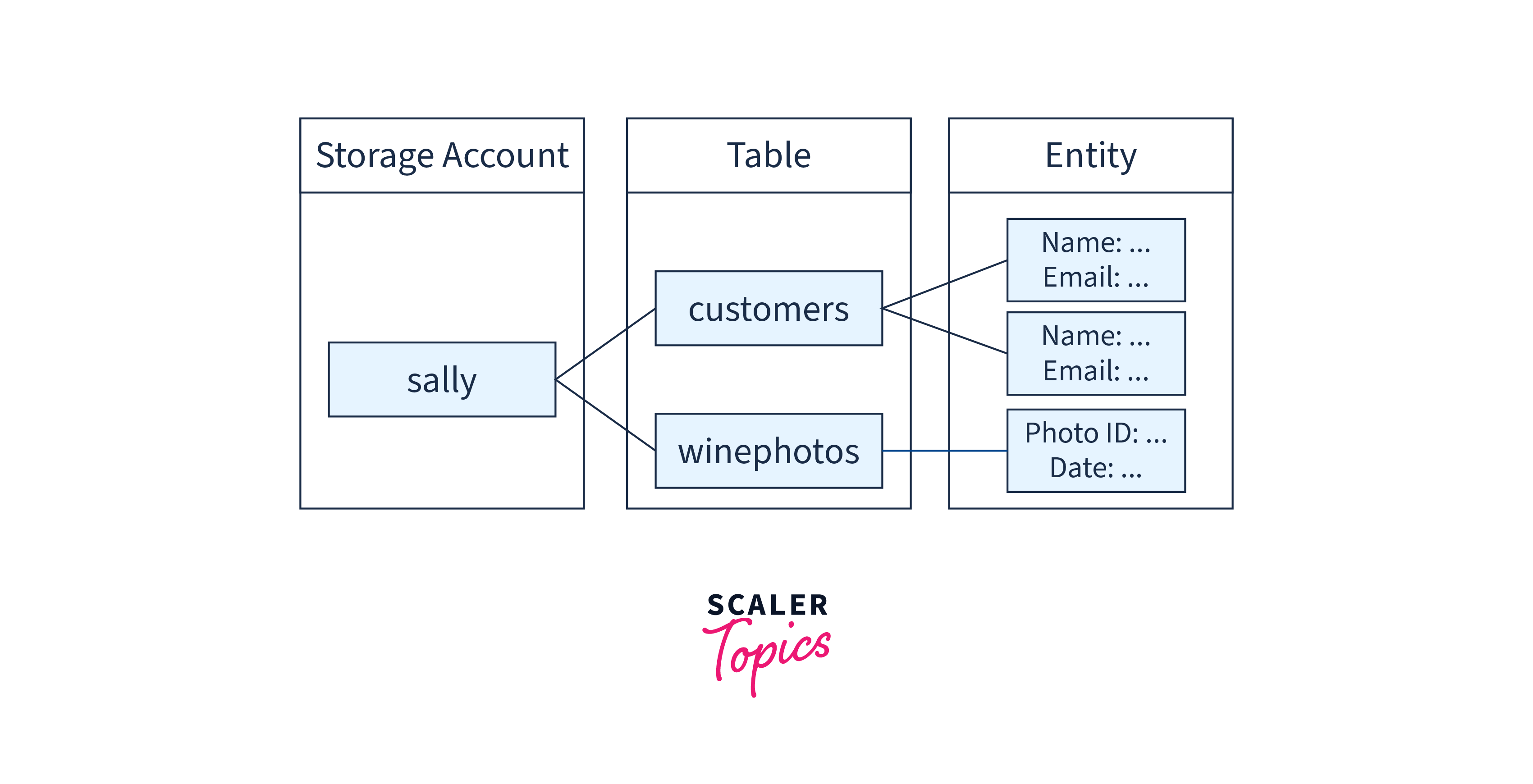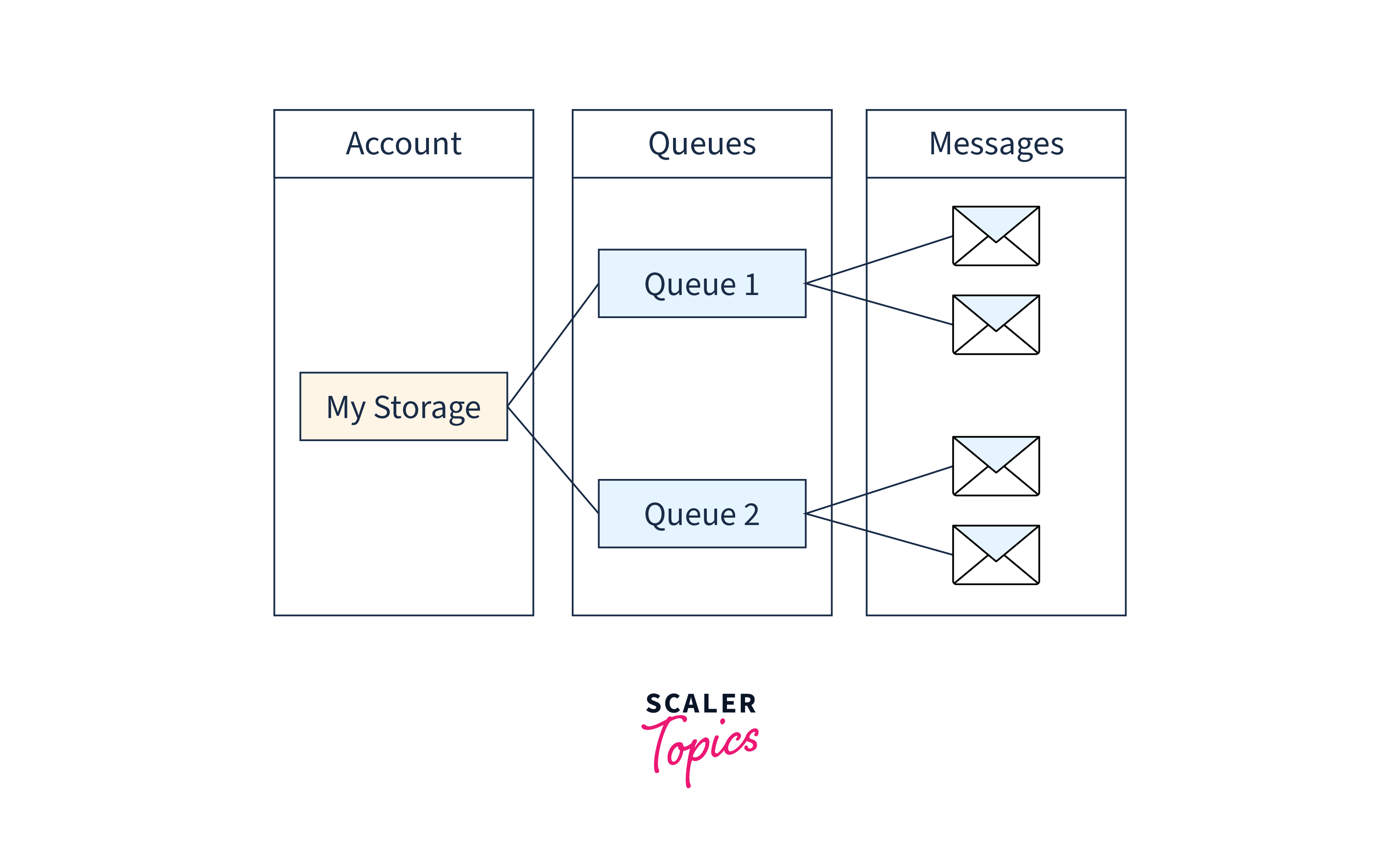Azure Table and Queue Storage
Overview
In the rapidly evolving landscape of cloud computing, data storage and efficient communication between components are critical for building modern applications. Microsoft Azure offers two essential services, Azure Table Storage and Azure Queue Storage, to address these needs. This article provides a comprehensive overview of these services, exploring their features, use cases, and benefits in the context of cloud-based data management and communication.
Introduction
Azure Table Storage and Azure Queue Storage are essential cloud-based storage services in Microsoft Azure. Azure Table Storage offers a schemaless NoSQL key-value store for structured data, allowing flexible data modeling. It is suitable for logging, user profiles, and IoT telemetry.
On the other hand, Azure Queue Storage provides message queuing for asynchronous communication between application components, enabling scalability and decoupling. Together, they empower developers to build scalable, resilient, and distributed cloud applications with efficient data storage and messaging capabilities.
Uses of Table storage
Uses of Table Storage:
-
Logging and Analytics: Azure Table Storage is often used for logging application events and analytics data.
-
User Profiles and Preferences: Table Storage can be utilized to store user profiles, preferences, and settings in a schemaless manner.
-
IoT Telemetry Data: Internet of Things (IoT) applications generate a large volume of telemetry data from sensors and devices.
-
Content Management Systems: Table Storage can serve as a reliable backend for managing content in Content Management Systems (CMS).
Uses of Azure Queue Storage:
-
Asynchronous Communication: Azure Queue Storage facilitates asynchronous communication between different components of an application.
-
Decoupling Components: By using queues, Azure Queue Storage helps in decoupling application components. This means that components can send and receive messages without directly interacting with each other.
-
Load Leveling and Scalability: Azure Queue Storage can handle a massive number of messages, making it ideal for load leveling and managing spikes in application traffic.
-
Fault Tolerance and Resilience: Azure Queue Storage replicates messages across multiple storage nodes, providing data durability and high availability.
Azure Table Structure
-
Storage Account:
- The top-level container in Azure Table Storage is the Storage Account, acting as the namespace for all storage services in a specific Azure region. It encompasses Table Storage, Blob Storage, Queue Storage, and File Storage, identified by a unique name and Azure Storage endpoint.
-
Table:
- Within a Storage Account, data is organized into tables, similar to database tables. Each table contains entities that share a common schema but can have different properties.
- Tables are schemaless, allowing entities to have different sets of properties, accommodating evolving data requirements without altering the table structure.
-
Entity:
- An entity in Azure Table Storage corresponds to a row in a relational database table. It represents a single data record within a table.
- Entities are uniquely identified by a combination of two properties: Partition Key and Row Key. These attributes ensure efficient data distribution and retrieval.
-
Properties:
- Entities consist of key-value pairs called properties, representing data attributes.
- Properties support various data types and offer a flexible schema for entities within the same table.

Azure table storage concepts
Accounts
- Azure Table Storage relies on a Storage Account, acting as the top-level container for all Azure storage services. It is assigned a unique name and associated with an Azure Storage endpoint specific to the region.
- The Storage Account provides access keys used for authentication and data access in Azure Table Storage.
Table
- Azure Table Storage organizes data into tables, similar to relational database tables.
- Each table is a schemaless collection of entities, offering flexibility in data schema without predefined tables or explicit schema definitions.

Entity
- An entity in Azure Table Storage is analogous to a row in a relational database table, representing a single data record.
- It is uniquely identified by a combination of Partition Key and Row Key, enabling efficient and direct access during data retrieval.
Properties
- Entities consist of key-value pairs called properties, representing data attributes.
- Properties support various data types, such as strings, integers, Booleans, and more.
Table Storage queries
-
Filtering Data:
- Retrieve entities based on specific criteria using property values and comparison/logical operators.
- Example: Get entities where "Category" is "Electronics" and "Price" is less than 500.
-
Projection:
- Retrieve specific entity properties instead of the entire entity to reduce data transfer.
- Example: Fetch "Name" and "Price" properties only from entities.
-
Sorting Data:
- Order retrieved entities by a specific property in ascending/descending order.
- Example: Sort entities by "Timestamp" property in descending order.
-
Top and Skip:
- Limit the number of entities returned (Top) and skip a specified number of entities (Skip).
- Example: Get the top 10 entities sorted by "Price" and skip the first 5.
-
Combining Filters:
- Create complex queries by combining multiple filters with logical operators.
- Example: Retrieve entities with "Category" as "Electronics" and "Price" less than 500, OR "Category" as "Clothing."
Azure Queue Storage Service
-
Message Queuing:
- Azure Queue Storage enables asynchronous communication between application components with message queuing.
- Messages are stored in queues, allowing various components to process them independently.
-
First-In, First-Out (FIFO) Ordering:
- Messages in an Azure Queue are processed in the order of arrival (FIFO), maintaining task sequence.
- Ensures orderly processing of messages based on their addition time.
-
Scalability and Resilience:
- Azure Queue Storage handles large message volumes, scales automatically for varying workloads.
- Messages are persisted and replicated, ensuring data durability and high availability.
-
Decoupling Components:
- Queues enable components to work independently and asynchronously, fostering loose coupling.
- Enhances application flexibility and ease of maintenance.
-
Delaying Messages:
- Azure Queue Storage supports visibility timeout, delaying message visibility to components.
- Messages are not immediately visible, providing scheduled processing.
-
Peek and Dequeue Messages:
- Applications can peek at queue messages without removal, checking for available work.
- Dequeueing removes messages from the queue for processing.
Azure Queue storage concepts
Queue
- A Queue in Azure Queue Storage is a container that holds a collection of messages in a first-in, first-out (FIFO) order.
- Applications can enqueue (add) messages to the end of the queue and dequeue (retrieve and remove) messages from the front of the queue for processing.
Storage Account
- A Storage Account in Azure is a top-level container that holds multiple storage services, including Azure Queue Storage, Table Storage, Blob Storage, and File Storage.
- Each Storage Account is associated with a unique name and is accessible through an Azure Storage endpoint specific to the Azure region where it is created.
URL Format
- Azure Queue Storage provides unique URLs for accessing queues and their messages. The URL format includes the following components:
- https://<accountname>.queue.core.windows.net/<queuename>
- The URL includes the name of the Storage Account (<accountname>) and the name of the specific queue (<queuename>) to access.
Message
- A Message in Azure Queue Storage represents a unit of data sent and received from a queue.
- Messages can contain information or instructions that need to be processed by the receiving application component.
Importance of Azure Queue Storage
- Asynchronous Communication: Facilitates communication between components without waiting for immediate responses, promoting flexibility.
- Decoupling Components: Allows components to exchange messages independently, enhancing maintainability.
- Load Leveling and Scalability: Handles high message volumes, automatically scales to manage traffic spikes.
- Fault Tolerance and Resilience: Replicates messages for data durability, ensures message delivery even during failures.
- Message Processing Integrity: Ensures messages are processed only once, maintaining data integrity.
- Scalable Message Processing: Efficiently handles varying workloads, supports scalable message processing.
Conclusion
- Azure Table and Queue Storage are crucial components in Microsoft Azure for data storage and message queuing in cloud applications.
- Azure Table Storage is a schemaless, NoSQL key-value store suitable for logging, user profiles, and IoT telemetry.
- Azure Queue Storage enables asynchronous communication between application components, promoting decoupling and scalability.
- Azure Table Storage utilizes Storage Accounts as top-level containers for all storage services, identified by unique names and Azure Storage endpoints.
- Inside a Storage Account, data is organized into individual tables, similar to relational database tables, containing entities with shared schemas.
- Entities in Azure Table Storage represent single data records and are uniquely identified by a combination of Partition Key and Row Key.
